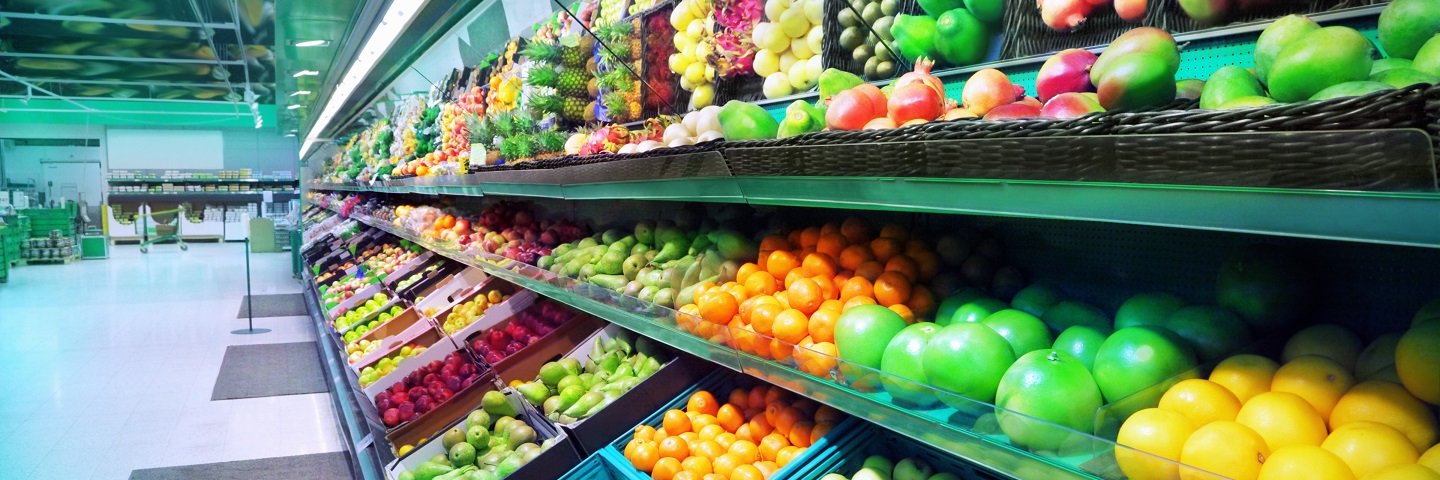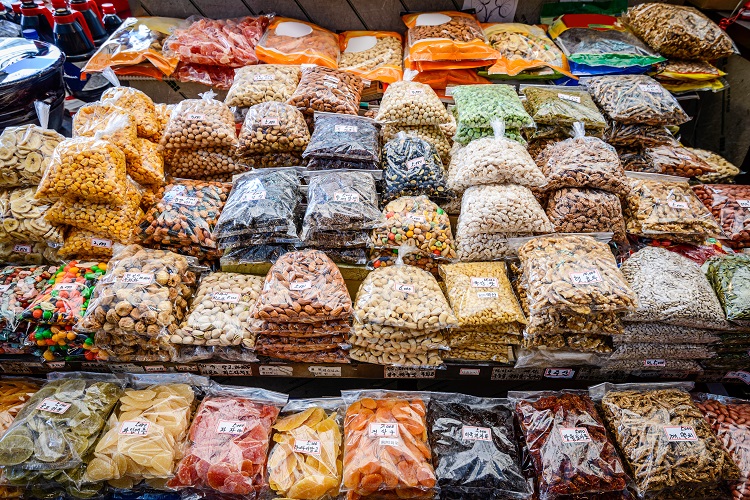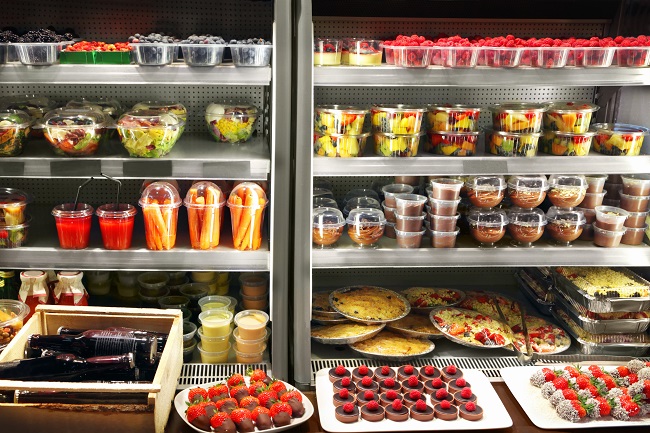
Visit our other sites
-
Fapas - Proficiency Testing
Globally recognised provider of proficiency tests, running over 400 tests annually across an extensive range of matrices and analytes
-
Great Crested Newts Testing
A single sample taken by an ecologist at any time during the newt breeding season can determine their presence or absence, saving you time and money
Emma studied at the University of Leeds for a BSc in chemistry and a PhD in bio-organic chemistry, working at Fera since 1999.


Find Emma on: LinkedIn
-
Area of expertise
Analysis of substances found in food contact materials, (NIAS) and analytical method development and validation
-
Years of experience
18+
-
Highest qualification
PhD
Emma is an analytical chemist by training and currently leads a team of 120 scientists working on food integrity and safety. She has more than 18 years of experience in the analysis of chemical contaminants in foods and specifically chemical migration from food contact materials and articles. She is an active participant in the European Union Reference Laboratory – National Reference Laboratory (NRL) network for food contact materials as Fera is the UK NRL in this area.
Emma’s primary areas of expertise are:
- Food contact materials and articles – Regulations and testing
- NIAS (Non Intentionally Added Substances)
- Chemical analysis of foodstuffs
She is also an author of > 30 peer reviewed scientific publications on food contact materials.
More about food packaging analysis
Fera is the UK National Reference Laboratory for Materials and Articles in Contact with Food. Food contact materials testing is used worldwide to make sure that food is not contaminated by any of the products it comes into contact with.
Latest Papers and Articles
Including Non-Dietary Sources into an Exposure Assessment of the European Food Safety Authority: the challenge of multi-sector chemicals such as Bisphenol A. N, von Goetz. R. Pirow, A. Hart, E. Bradley; M. F. Pocas; D. Arcella, Inger T. L. Lillegard, C. Simoneau, J. van Engelen, I. Pratt, Trine Husoy, A. Theobald and C. Leclercq. Regulatory Toxicology and Pharmacology, 2017, 85: 70-78.
Safety Assessment of Food Contact Materials: The Role of High-resolution Mass Spectrometry in the Comprehensive Analysis of the Total Migrate. M. Driffield, E. L. Bradley and L. Castle. Thermo White Paper 71889. 2016.
Use of atmospheric pressure solids analysis probe time-of-flight mass spectrometry to screen for plasticisers in gaskets used in contact with foods. M. Driffield, E. L. Bradley, L. Castle, A. Lloyd, M. Parmar, D. Speck, D. Roberts and S. Stead. Rapid Communications in Mass Spectrometry, 2015, 29(17): 1603-1610.https://doi/10.1002/rcm.7255
A Comparison of the Migration of "Spiked' and "Intrinsic' Substances from Paper and Board into Raisins and into Tenax as a Food Simulant. E. L. Bradley, L. Castle and D. R. Speck. Packaging Technology and Science, 2015, 28(6): 509-517.
Model studies of migration from paper and board into fruit and vegetables and into TenaxTM as a food simulant, E.L. Bradley, L. Castle & D.R. Speck. Food Additives & Contaminants: Part A, 2014, 31(7): 1301-1309.

Emma and their team work with customers to deliver the following services within Fera...
Surveillance of the main classes of contaminants that are regulated in the human and animal feed supply chain. These include; heavy metals, pesticides, veterinary medicines, dioxins/PCBs, PAHs and mycotoxins.

Food Contact Materials Testing
Our work involves targeted and non targeted analysis of known and unknown migrants. Analysis can be carried out in complex matrices (foods, food simulants and food contact materials and articles) utilising a range of advanced chromatographic and mass spectrometric techniques.

Contaminant Testing
Our experts focus on the scientific research relating to intentionally added food components and to those arising from chemical changes during food processing, bioactive chemicals and natural toxicants.

Authenticity Testing
Fera's analysts use industry leading techniques and cutting edge technologies to ensure compliance with food safety regulations, protecting public health and traceability.
Latest Papers and Articles
Including Non-Dietary Sources into an Exposure Assessment of the European Food Safety Authority: the challenge of multi-sector chemicals such as Bisphenol A. N, von Goetz. R. Pirow, A. Hart, E. Bradley; M. F. Pocas; D. Arcella, Inger T. L. Lillegard, C. Simoneau, J. van Engelen, I. Pratt, Trine Husoy, A. Theobald and C. Leclercq. Regulatory Toxicology and Pharmacology, 2017, 85: 70-78.
Safety Assessment of Food Contact Materials: The Role of High-resolution Mass Spectrometry in the Comprehensive Analysis of the Total Migrate. M. Driffield, E. L. Bradley and L. Castle. Thermo White Paper 71889. 2016.
Use of atmospheric pressure solids analysis probe time-of-flight mass spectrometry to screen for plasticisers in gaskets used in contact with foods. M. Driffield, E. L. Bradley, L. Castle, A. Lloyd, M. Parmar, D. Speck, D. Roberts and S. Stead. Rapid Communications in Mass Spectrometry, 2015, 29(17): 1603-1610.https://doi/10.1002/rcm.7255
A Comparison of the Migration of "Spiked' and "Intrinsic' Substances from Paper and Board into Raisins and into Tenax as a Food Simulant. E. L. Bradley, L. Castle and D. R. Speck. Packaging Technology and Science, 2015, 28(6): 509-517.
Model studies of migration from paper and board into fruit and vegetables and into TenaxTM as a food simulant, E.L. Bradley, L. Castle & D.R. Speck. Food Additives & Contaminants: Part A, 2014, 31(7): 1301-1309.

Emma and their team work with customers to deliver the following services within Fera...
Surveillance of the main classes of contaminants that are regulated in the human and animal feed supply chain. These include; heavy metals, pesticides, veterinary medicines, dioxins/PCBs, PAHs and mycotoxins.

Food Contact Materials Testing
Our work involves targeted and non targeted analysis of known and unknown migrants. Analysis can be carried out in complex matrices (foods, food simulants and food contact materials and articles) utilising a range of advanced chromatographic and mass spectrometric techniques.

Contaminant Testing
Our experts focus on the scientific research relating to intentionally added food components and to those arising from chemical changes during food processing, bioactive chemicals and natural toxicants.

Authenticity Testing
Fera's analysts use industry leading techniques and cutting edge technologies to ensure compliance with food safety regulations, protecting public health and traceability.

Copyright © 2025 Fera Science Limited (“Fera”). All rights reserved.
For further information about how Fera uses any personal data collected from you, please see our Privacy Notice at www.fera.co.uk/privacy-policy.

